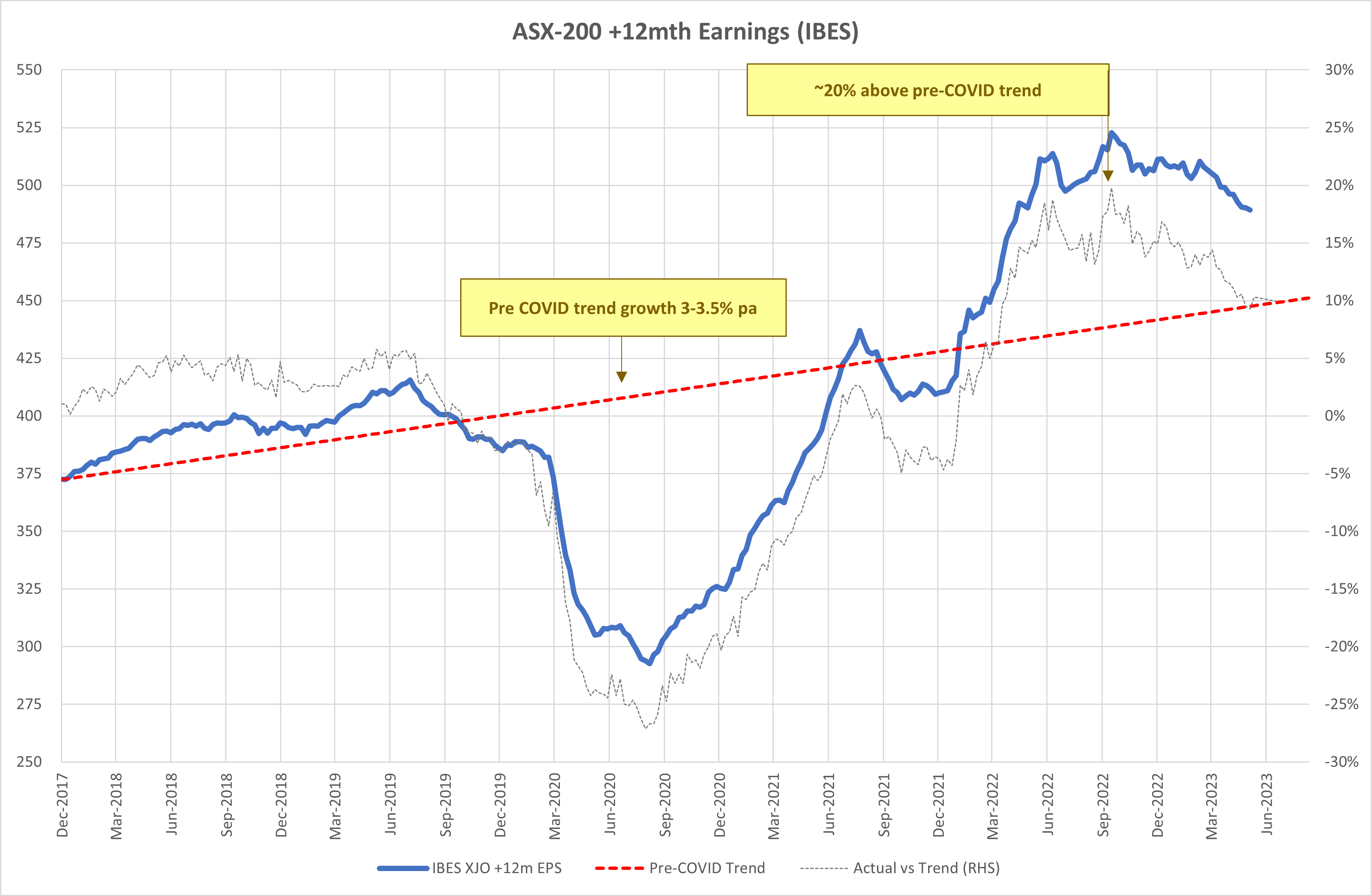3 ASX large caps this fund manager would buy with an extra $10,000
UBS recently shared some insights on the June/July ASX confession season. In short, it argued that the consensus was still too richly priced and that some of the big name downgrades are having outsized impacts on the ASX 200's forward earnings profile as an index. But the downgrades have not been - for the most part - collapses. Even CSL's earnings downgrade will still see the Australian darling grow at a double-digit pace.
Someone who would agree with this thesis is Ron Sargeant from Touchstone Asset Management. Sargeant, speaking to our own Chris Conway, argues more volatility and opportunities are likely to crop up in the second half.
As results come through and the winners are separated from the losers, Sargeant expects company share prices will fall back to earth and that some companies which the market thought were "quality" may not be able to live up to the hype.
In this wire, we're going to be putting Sargeant's process and overarching market views to the test in the newest edition of The $10,000 Idea.
The premise for this series is simple. We've asked a range of fund managers to tell us how they would invest $10,000 in new capital. Previous iterations of the series can be seen here:
.png)

.png)

After answering a couple of quick-fire questions about their process and views on valuations, each participant can invest the (hypothetical) cash in up to three individual assets with any spare money going into a term deposit that will fetch 4% yield.
What's your read on market valuations at the moment?
The ASX200 is trading on a one-year forward price-to-earnings multiple (PE) of around 14.5-15.0x, which is in line with the long-term average. Unfortunately, there are two major issues with this simplistic assessment.
The first is that it assumes the consensus earnings used to calculate the PE are correct – we are confident that is not the case. As the following chart shows, ASX200 earnings are currently around 10% above trend.

From a top-down perspective, the slowdown in economic activity due to higher interest rates should see earnings growth slow to at or below trend. Our team’s bottom-up work also suggests that higher costs such as wages are not adequately reflected in consensus, with forecast margins being the issue.
Our confidence that earnings are too high is reinforced by the fact that almost half of the ASX300 has estimates that are two months old, with a significant number more than three months old. Given the sharp slowing in the economy, large rise in wages, and other costs, there should have been more changes to earnings forecasts than have occurred.
The second issue is that while the overall market PE looks reasonable, this is an outcome of industrials firms trading at a ~25% premium to the longer-term average, while resources trade at a 15-20% discount.
Overall, then, we think the market is expensive, particularly the industrials. That is not to say, however, that there are no opportunities among select stocks.
How did you pick the assets you did for this experiment?
At the core of our investment process is a belief that quality companies will outperform through the cycle. This is due to the fact that they have both lower risk, and an ability to reinvest capital at higher rates of return (i.e. grow earnings).
The key is not to overpay. This is why we say that our process focuses on buying Quality at a Reasonable Price (or QARP for short).
In order to do this, we rank the stocks within our investment universe according to their combined quality and value characteristics. This multi-factor assessment employs both qualitative and quantitative assessments of several financial and non-financial factors allowing us to objectively and consistently assess quality and value across the ASX300.
In order to identify stocks that might look interesting, we simply look to the top of our rankings. I should caution, however, that a large part of our process is portfolio construction. So, these ideas would only make it into our portfolio to the extent that they help diversify factor risk or add exposure that the portfolio does not currently offer.
This would also decide the investment weights which we have allocated evenly for the purposes of this exercise. We have a longer-term investment horizon and measure our returns post-tax.
Touchstone's $10,000 ideas
| Company | Stock Code | Allocation (%) |
| CSL | (ASX: CSL) | 33% |
| Goodman Group | (ASX: GMG) | 33% |
| South32 | (ASX: S32) |
33% |
The case for CSL (ASX: CSL)
The company is a global biotech leader with exceptional positions in strong markets. Its management is well-regarded with a proven track record, and the company's balance sheet is sound. We’re forecasting annual earnings growth of around 15% p.a. over the next few years.
This means that even though we’re concerned about the broader market’s earnings growth, we expect that CSL earnings could be substantially higher in three years. Following the company’s recent pullback, and given the very strong growth profile, the stock is expected to generate strong returns over the medium term.
The case for Goodman Group (ASX: GMG)
Goodman Group is very high quality with tier-one assets, a strong balance sheet, and exceptional management team. We talk to a number of their tenants and are comfortable that even in a global downturn in demand, their properties will remain highly valued.
This is particularly the case given that they are helping their clients reduce costs and become more efficient with their technologically advanced and well-located facilities.
In addition, we expect that in a downturn they would find it easier to deploy capital at attractive returns. Such a scenario would also lead to lower interest rates, which might benefit the valuation of long-duration assets such as those held by Goodman Group.
The case for South32 (ASX: S32)
Resources companies are inherently lower quality as they can be impacted by a wide variety of factors outside of their control. That being said, we see longer-term growth in the base metals as a result of decarbonisation, with increasingly limited supply also expected to support prices.
South32 offers exposure to this, without the risk that comes from being in smaller, single asset or single commodity stocks.
The company's projects can be thought of as a portfolio of smaller operations across various commodities and geographies. The portfolio is being repositioned over time towards future-facing metals and is primarily exposed to the aluminium value chain (~50% of the value). The group also has meaningful copper (~12%), nickel ~13%, manganese (~7%), and met coal (~12%) operations.
The company has a good balance sheet, strong returns, and is conducting a long-running buyback. There is certainly the potential for the company to be impacted by higher costs and/or slower global growth, particularly out of China.
However, the stock has already corrected and any further weakness should offer levels that offer strong returns over the medium to longer term.

2 topics
3 stocks mentioned
1 fund mentioned
2 contributors mentioned

